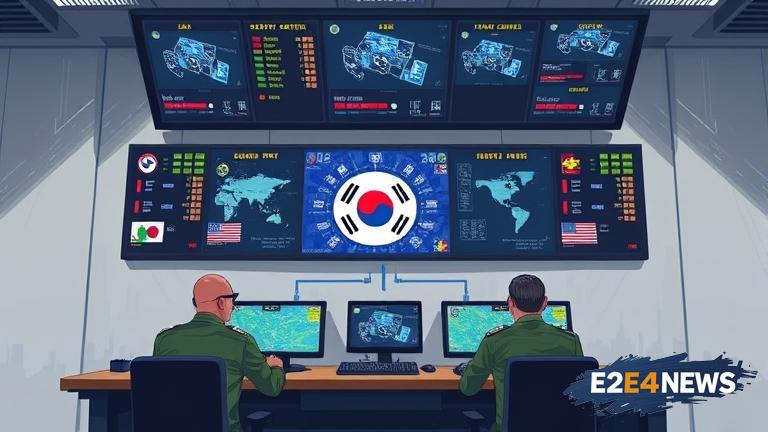The South Korean military has announced plans to upgrade its joint command control system, a move aimed at enhancing the country’s defense capabilities and improving interoperability between different branches of the military. This development is part of a broader effort to modernize the military’s command and control structures, ensuring they are better equipped to handle the evolving security landscape in the region. The upgrade will focus on integrating advanced technologies, including artificial intelligence and cloud computing, to improve the speed and accuracy of command decisions. By leveraging these technologies, the military seeks to enhance its ability to respond quickly and effectively to potential threats. The joint command control system is a critical component of the military’s operational framework, facilitating coordination and communication between the army, navy, air force, and marine corps. The current system has been in place for several years and has undergone periodic updates, but this latest upgrade represents a significant overhaul. The military has stated that the new system will be designed to be more flexible and adaptable, allowing for easier integration of new technologies and capabilities in the future. This flexibility is seen as crucial in an era where technological advancements are rapid and unpredictable. The upgrade process is expected to be complex, involving the coordination of multiple stakeholders and the integration of various subsystems. However, the military is confident that the end result will be a more efficient and effective command structure. The decision to upgrade the joint command control system reflects the South Korean military’s commitment to staying at the forefront of defense technology. The country has been investing heavily in its military modernization efforts, recognizing the importance of a strong defense posture in the face of regional security challenges. The upgrade is also seen as a response to the changing nature of modern warfare, which increasingly involves cyber and electronic warfare, as well as the use of advanced missile systems. By enhancing its command and control capabilities, the South Korean military aims to improve its ability to deter and respond to these types of threats. The project is expected to involve significant investment, with the military allocating substantial funds for the development and implementation of the new system. The upgrade is anticipated to take several years to complete, with the military working closely with defense contractors and technology providers to ensure a smooth transition. The South Korean government has expressed support for the project, recognizing the importance of a strong and modern military for national security. The international community is also likely to take notice of this development, as it reflects the ongoing efforts of countries in the region to bolster their defense capabilities. The upgrade of the joint command control system is a significant step forward for the South Korean military, marking a new era in the country’s defense modernization. It demonstrates the military’s commitment to innovation and its determination to stay ahead of the curve in terms of technology and strategy. As the security landscape continues to evolve, the importance of advanced command and control systems will only continue to grow. The South Korean military’s decision to upgrade its joint command control system is a proactive move to address these challenges and ensure the country’s defense capabilities remain robust and effective. The project will be closely watched by defense analysts and experts, who will be keen to assess the impact of the upgrade on the military’s operational capabilities. The use of advanced technologies such as artificial intelligence and cloud computing is expected to be a key feature of the new system, enabling faster and more accurate decision-making. The integration of these technologies will require significant investment in training and education, to ensure that military personnel are equipped to use the new system effectively. The military has stated that it will prioritize the development of personnel skills, recognizing that the effective use of the new system will depend on the ability of users to maximize its capabilities. The upgrade of the joint command control system is a complex and challenging project, but one that is essential for the South Korean military’s continued effectiveness. It reflects the military’s commitment to innovation and its determination to stay at the forefront of defense technology. As the project progresses, it will be important to monitor its impact on the military’s operational capabilities and its contribution to regional security. The South Korean military’s efforts to modernize its command and control structures are part of a broader regional trend, as countries across Asia seek to enhance their defense capabilities. The upgrade of the joint command control system is a significant development in this context, demonstrating the South Korean military’s commitment to staying ahead of the curve in terms of technology and strategy. The project is expected to have significant implications for regional security, as it will enhance the military’s ability to respond to potential threats and improve its interoperability with other countries. The international community will be keen to assess the impact of the upgrade, recognizing its potential to contribute to stability and security in the region. The South Korean military’s decision to upgrade its joint command control system is a proactive move to address the evolving security landscape, and it demonstrates the country’s commitment to playing a leading role in regional defense efforts.





